The grand and historic Matsumoto Castle known as “Crow Castle” is one of the few original castles left in Japan. Join us as we tour the Matsumoto castle and climb the steep stairs to the top of the castle keep.
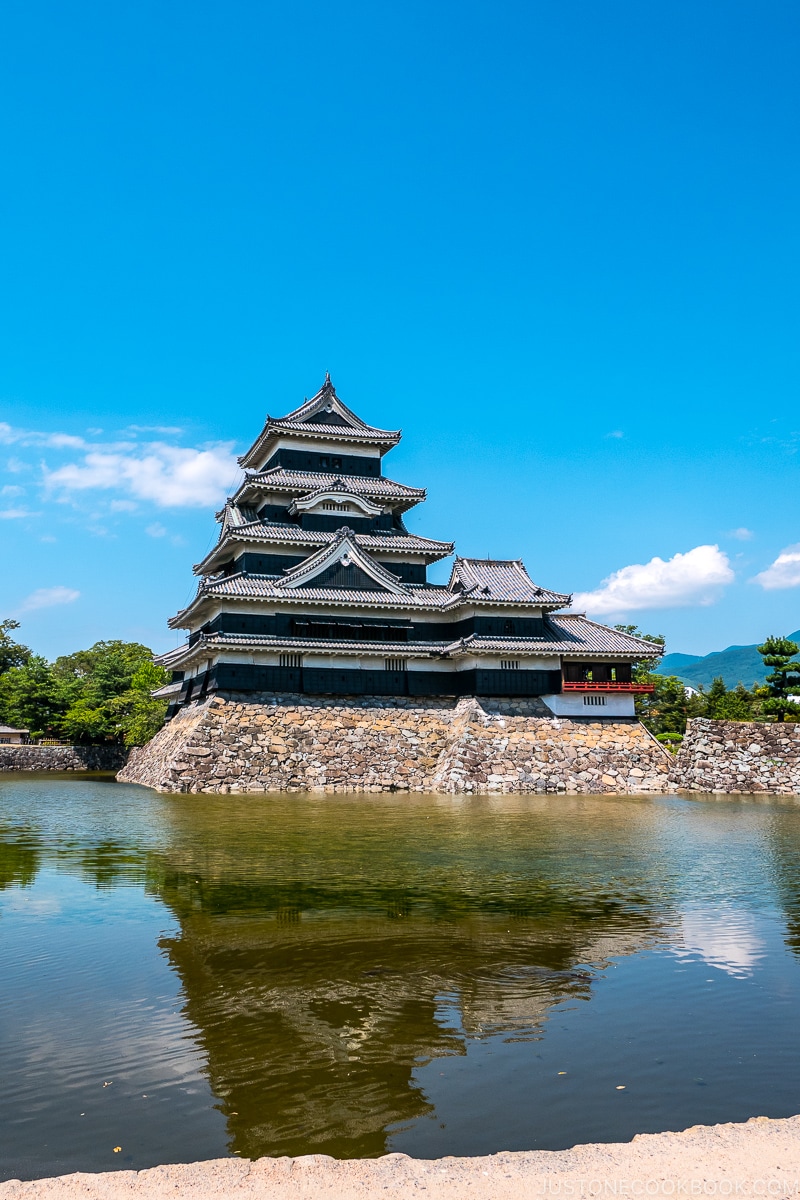
You’ve probably seen many Japanese castles featured on posters and postcards. However, out of the over one hundred castles, only twelve original castles remain. The remaining are reconstructed or in ruins today. We want to share with you our visit to one of the most magnificent original castles, Matsumoto Castle 松本城.
Where is Matsumoto Castle
Matsumoto Castle is located about three hours by car or train northwest of Tokyo. It is located in the center of Matsumoto City in Nagano Prefecture.
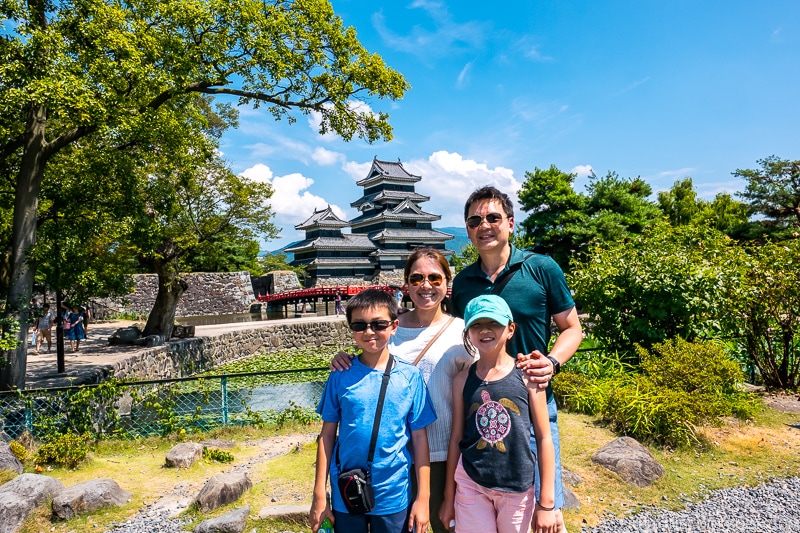
History of Matsumoto Castle
Matsumoto Castle started construction in 1590 and was completed around 1593 by the Ishikawa clan. What’s unusual about Matsumoto Castle compared to other Japanese castles is the number of different clans that ruled it over time.
In most cases, it’s been one or two clans that ruled each castle from the 1500 – the 1800s. However, Matsumoto Castle had been ruled by seven different clans including the Toda clan twice.
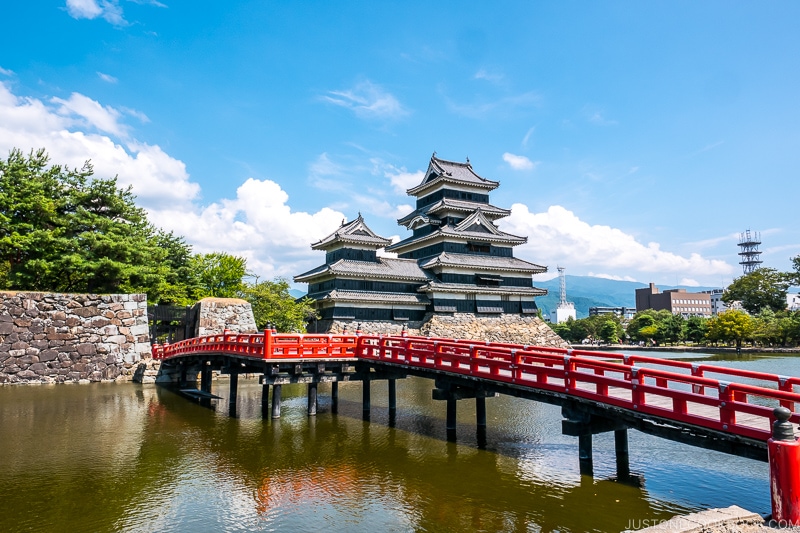
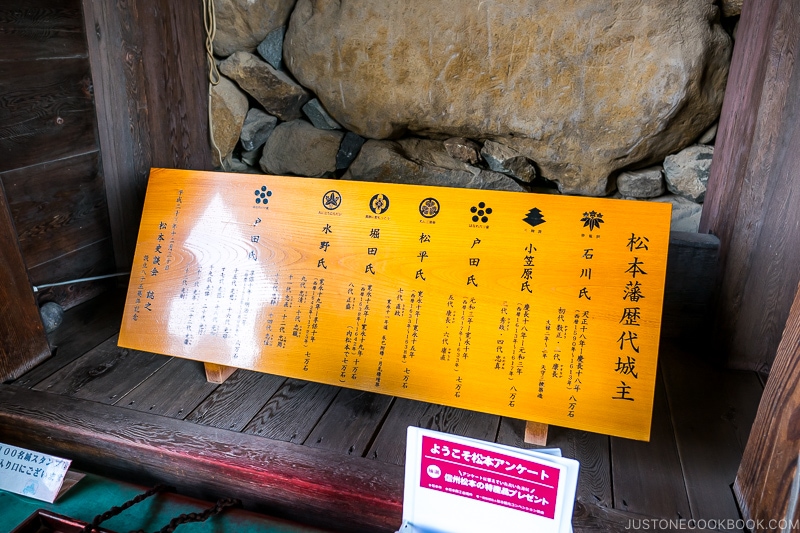
Matsumoto Castle Tour
To get to the main castle tower (tenshukaku 天守閣), visitors go through two gates, including a black gate (kuromon 黒門).
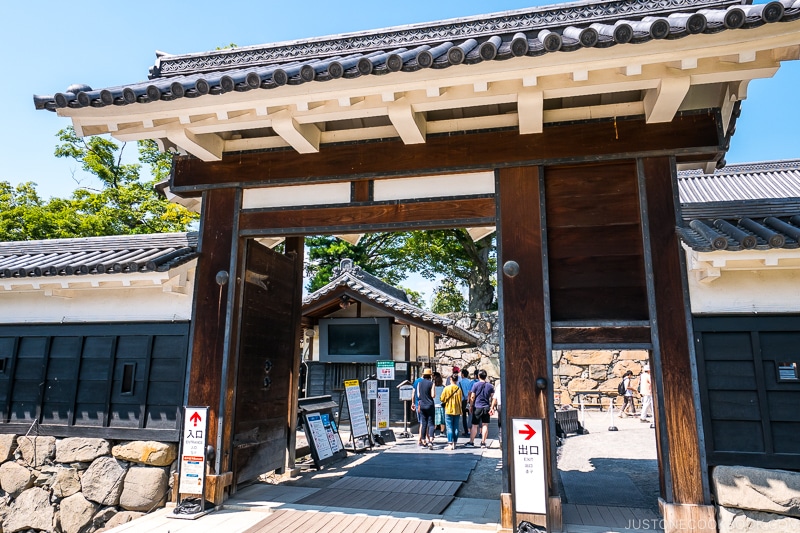
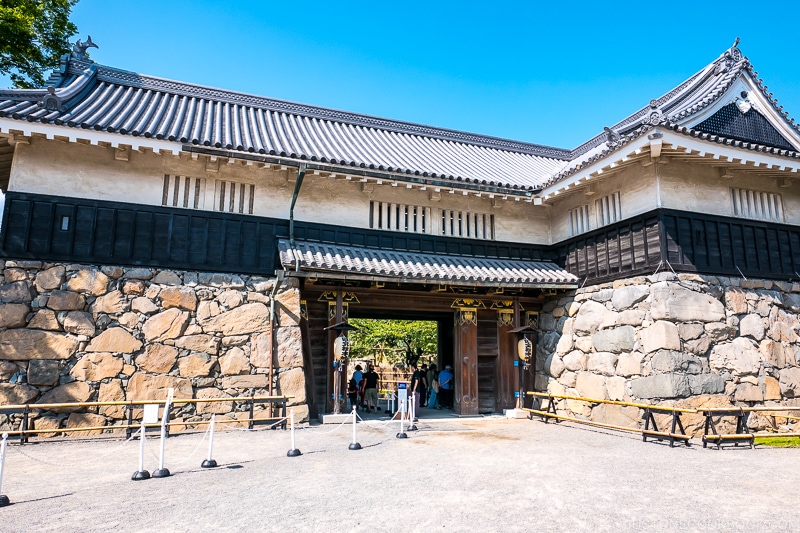
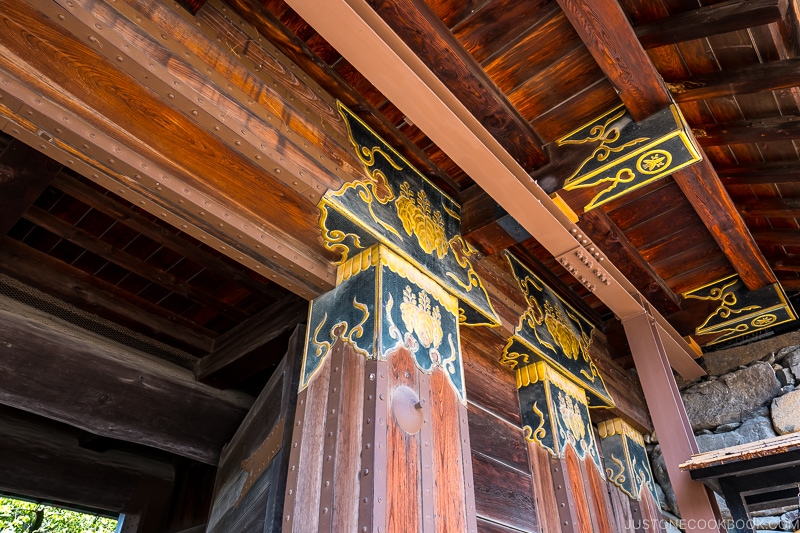
Inside kuromon, there is an open section where visitors can view the interior of the wall.
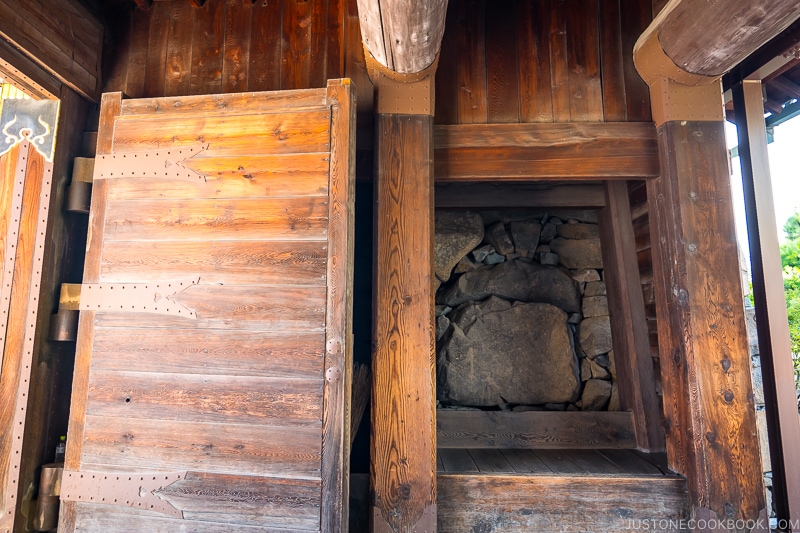
After entering through the gates, there is a large garden with manicured lawn and plants. This garden area used to be where the residences of the castle lords were located.
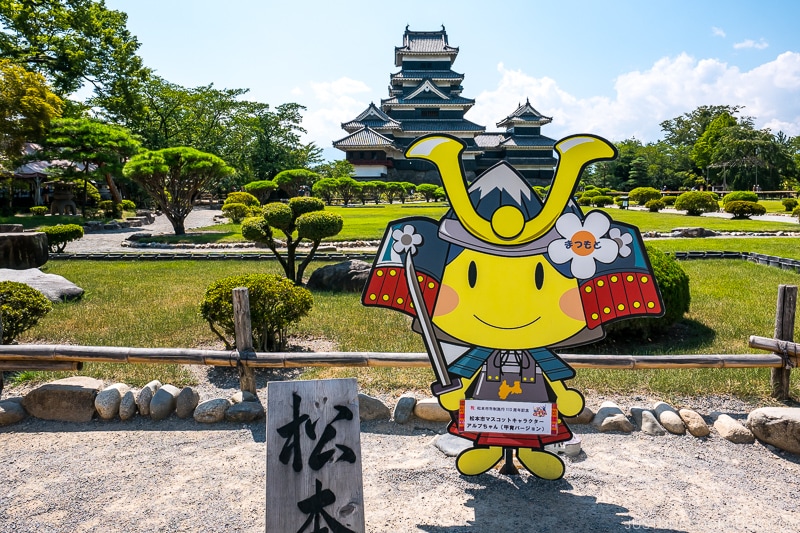
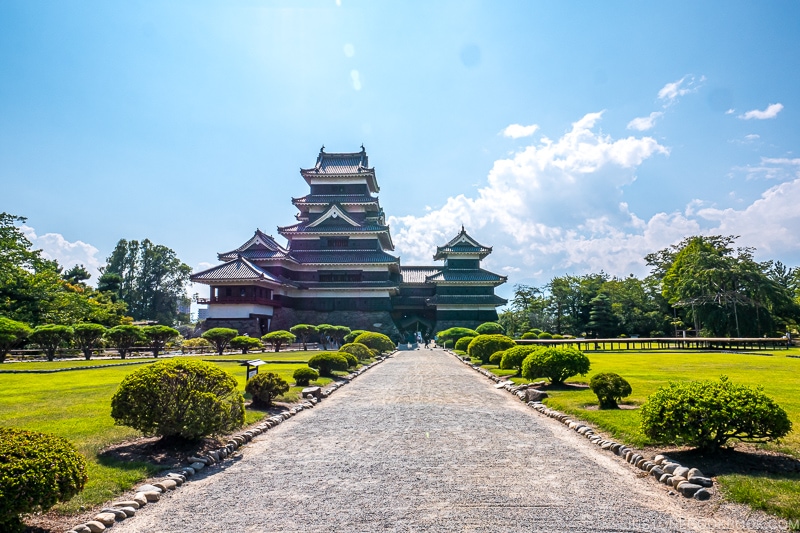
Matsumoto Castle Tenshukaku 松本城天守閣
The castle tenshukaku is original so it is not handicap accessible and could be strenuous for those who have a difficult time climbing steep stairs.
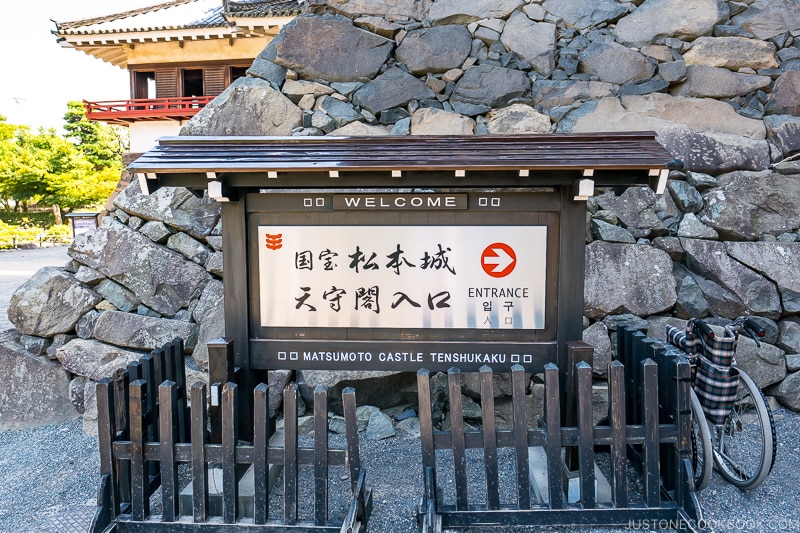
Visitors are required to take off their shoes to enter and carry them in a provided plastic bag with them throughout the tour.
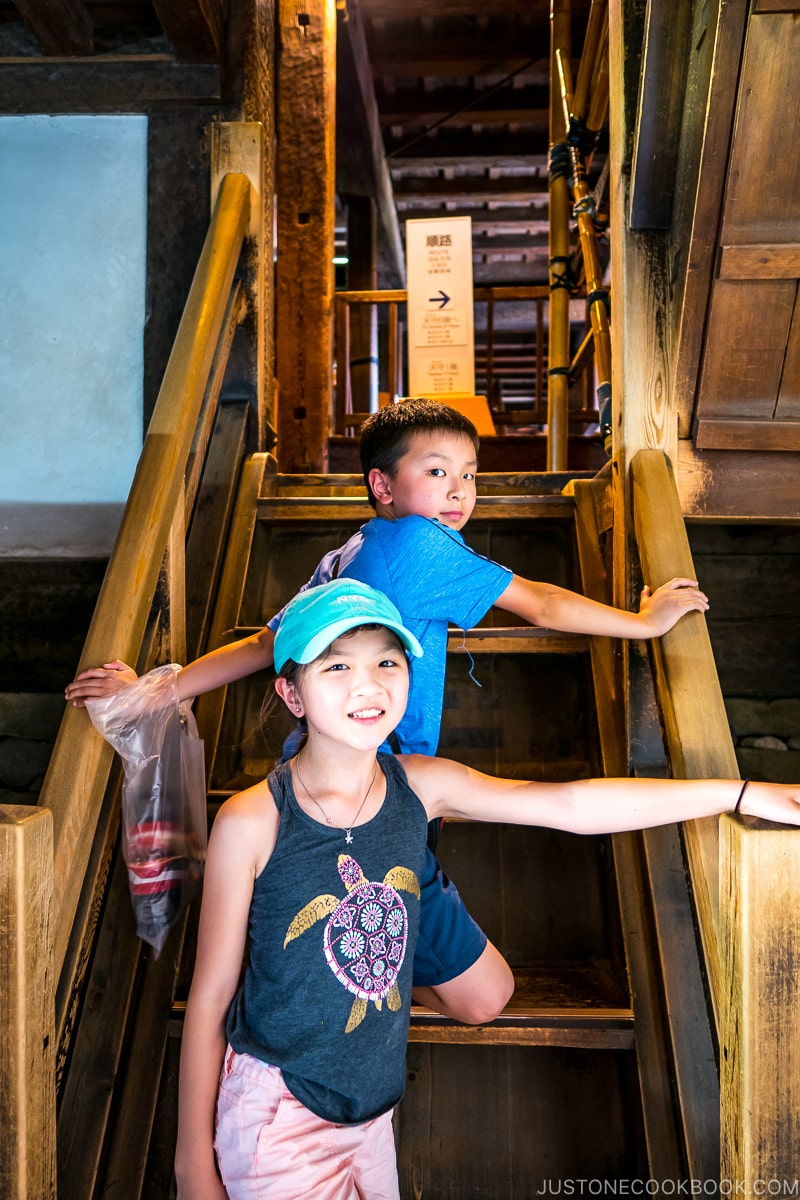
Once inside the building, there are many signs in Japanese and English explaining various features of the building and the exhibitions on display.
First Floor of The Tenshukaku
The first floor of the tenshukaku is quite large and was used for the storage of food, gunpowder, and weapons.
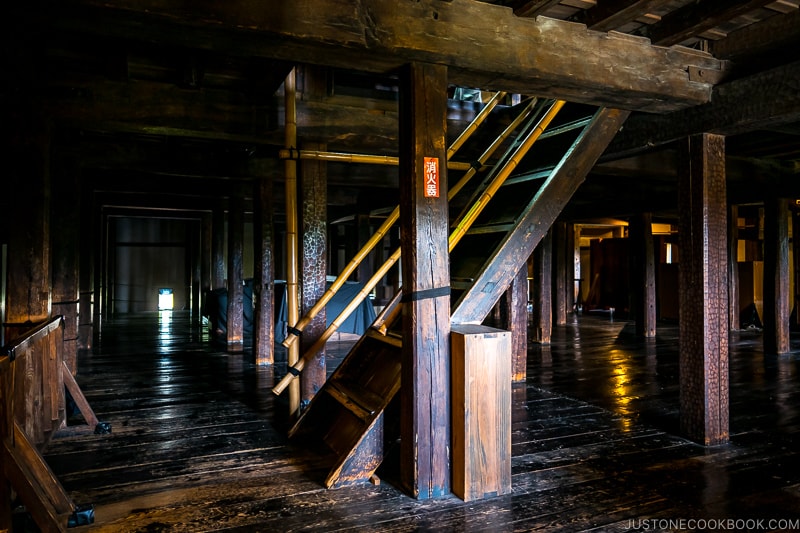
The first floor is critical for the defense of the castle and has many defensive capabilities built-in.
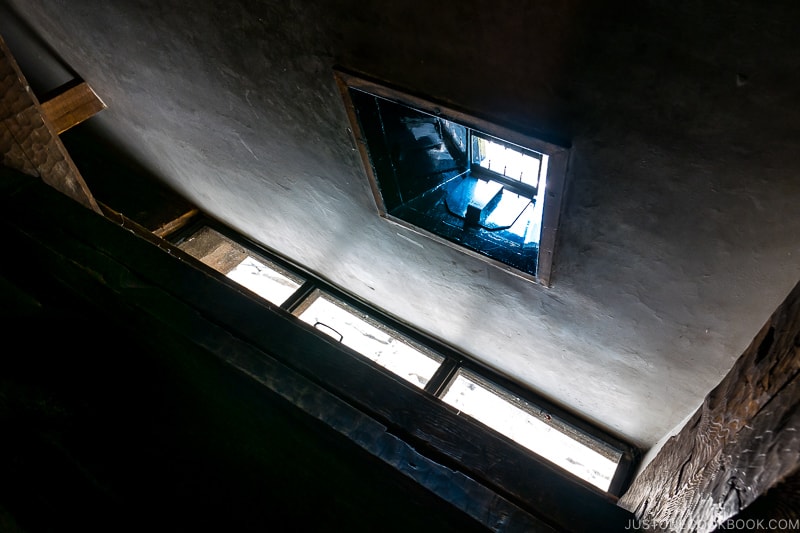
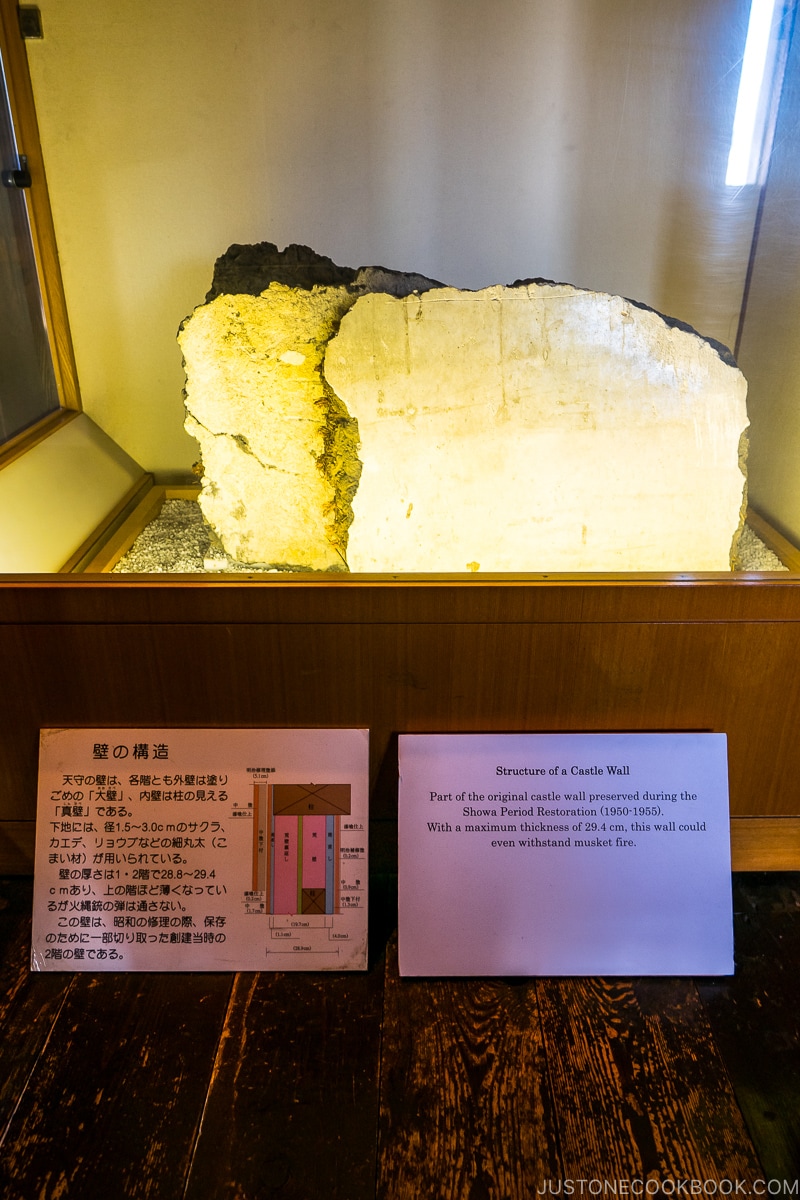
Exhibitions on the first floor include historical artifacts from the tenshukaku, such as shachi from the roof and various building parts.
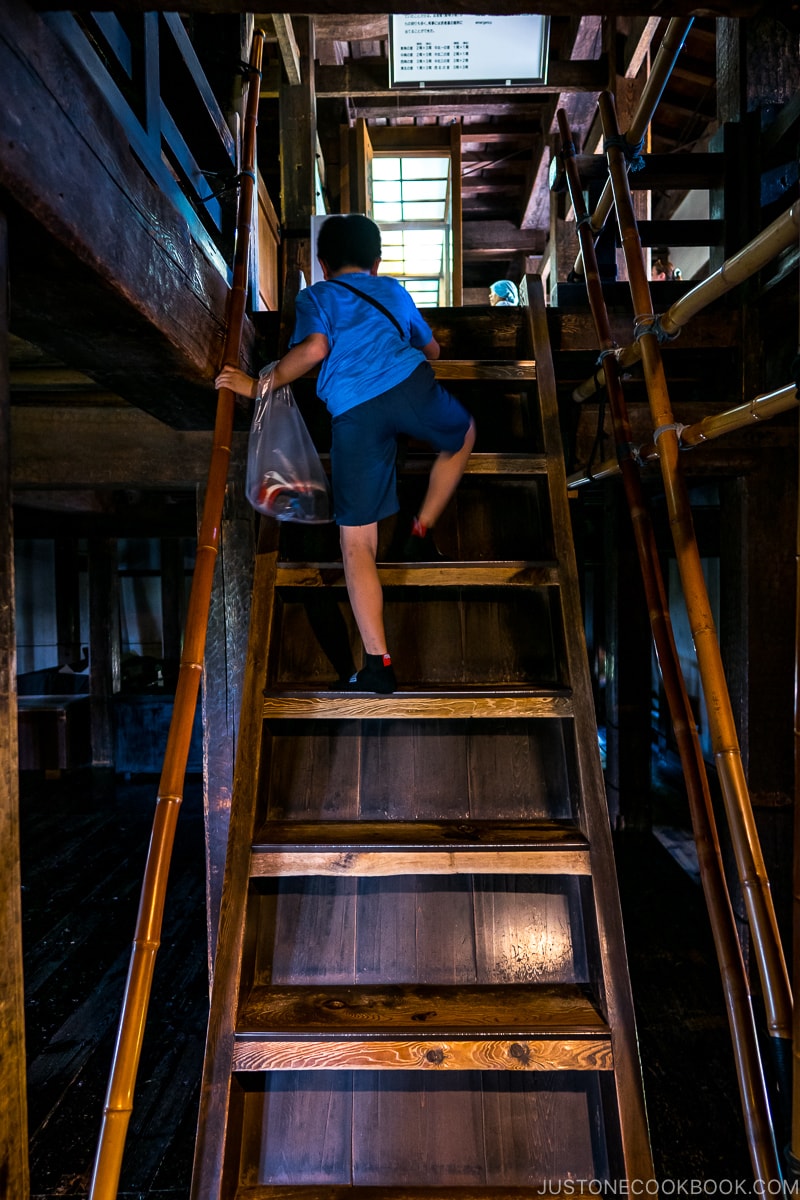
Second Floor of The Tenshukaku
The second floor of the tenshukaku includes an armory exhibition.
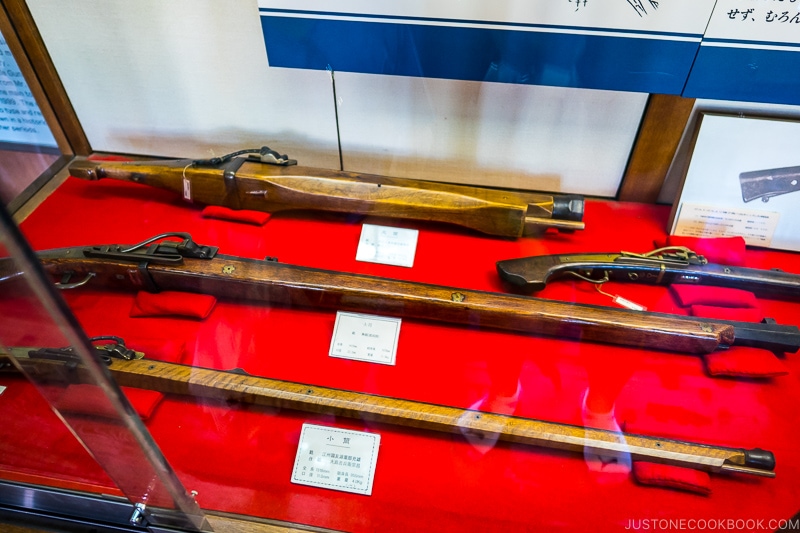
The exhibition included many antique guns, weapons, and armor on display.
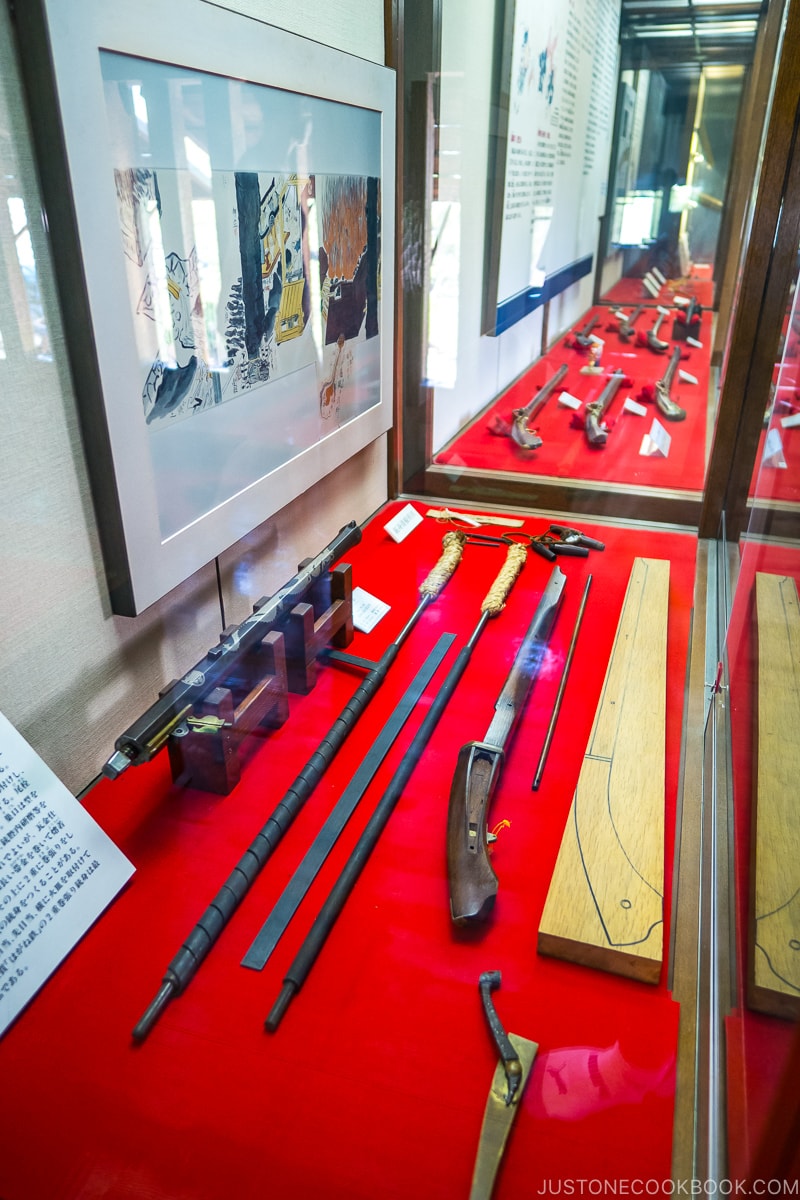
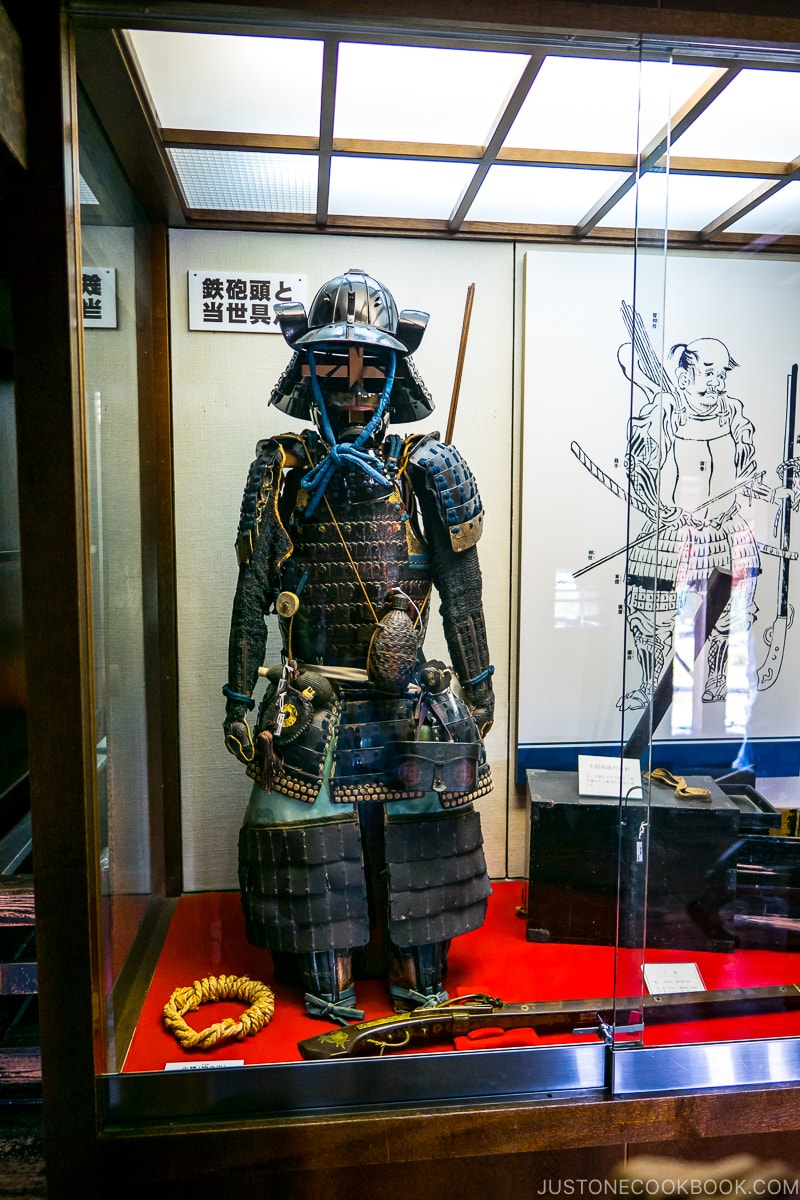
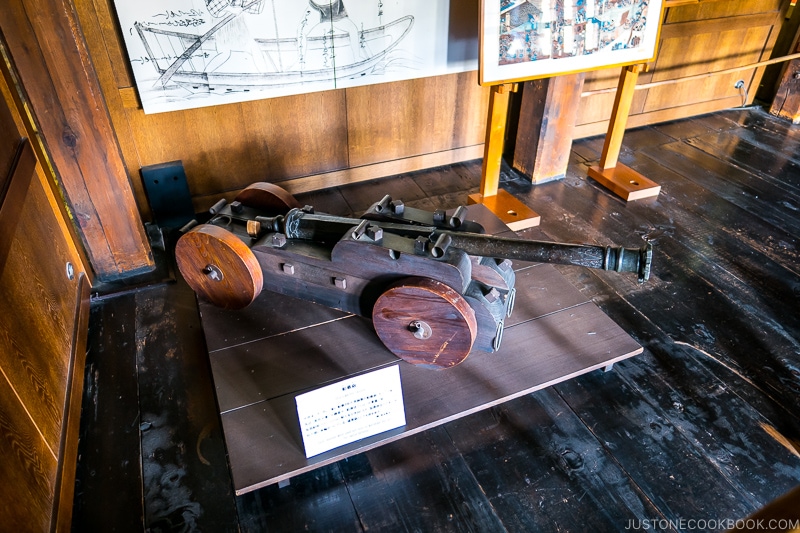
Third Floor of The Tenshukaku
Even though the castle is six floors, it appears only as five from the outside. The third floor is hidden with a low ceiling and no windows. It’s not visible from the exterior and the purpose was that soldiers could hide on the third floor and give enemies the wrong estimate of how many were inside.
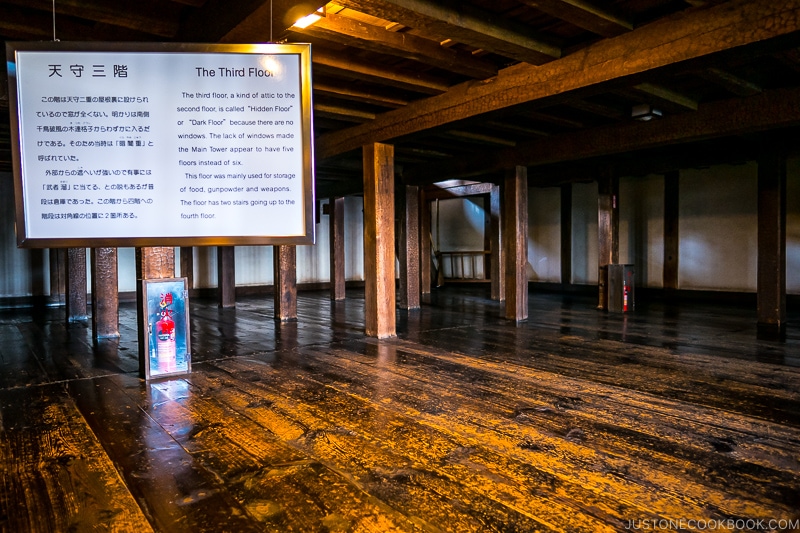
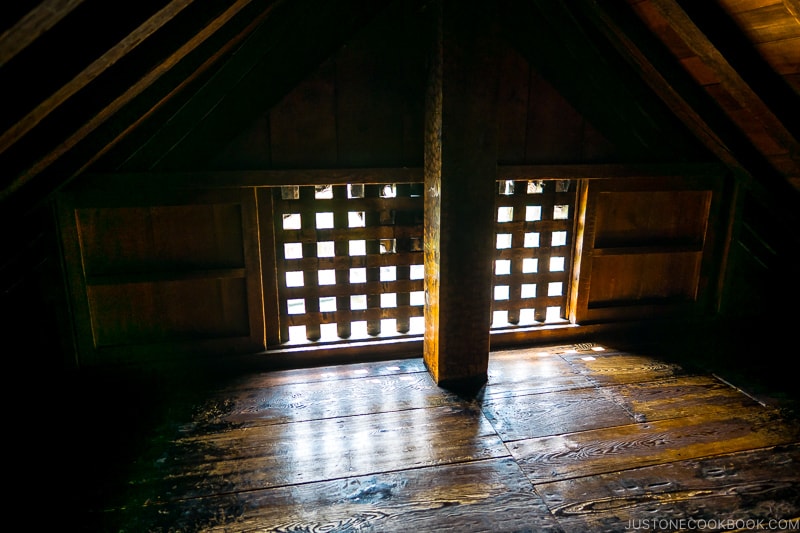
The Fourth and Fifth Floors of Tenshukaku
The fourth floor was the private quarters of the lord and the fifth floor was used for meetings.
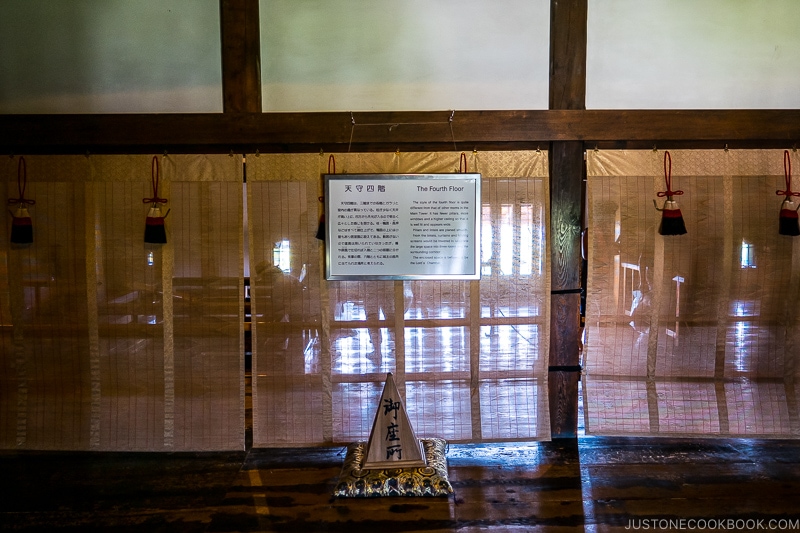
Top of Tenshukaku
The top floor was designed as the headquarter of the lord if the castle was at war. It has clear views in each direction.
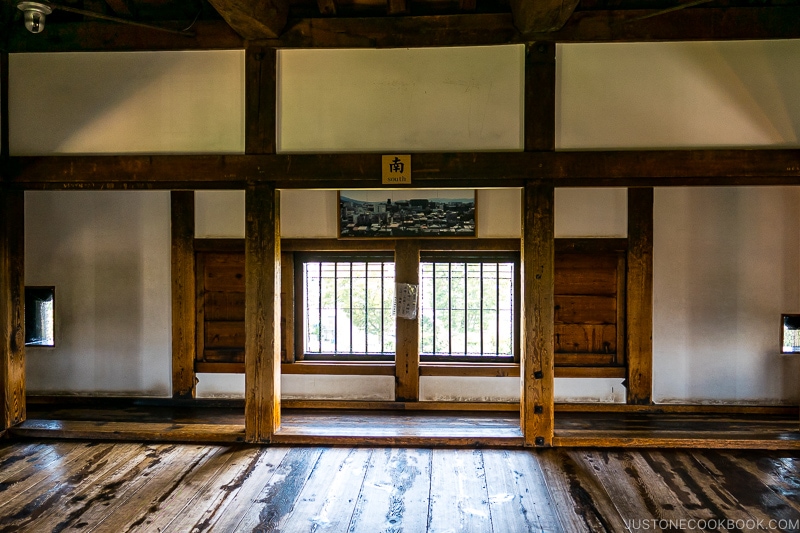
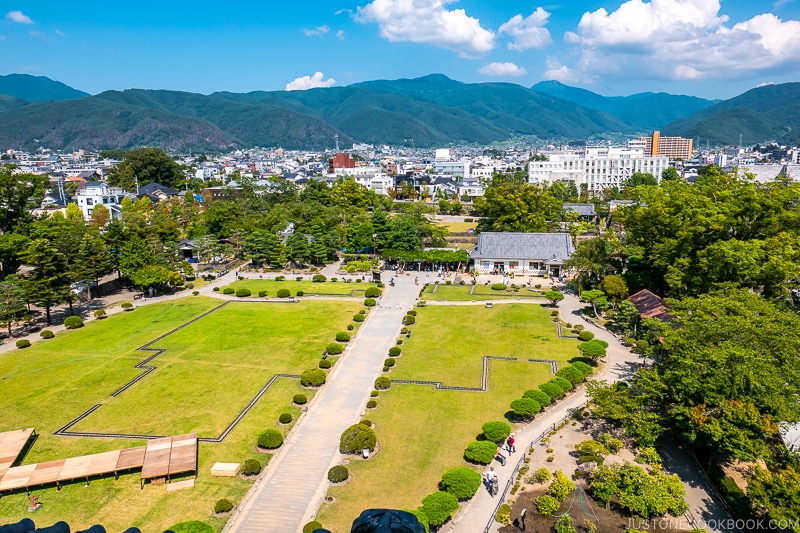
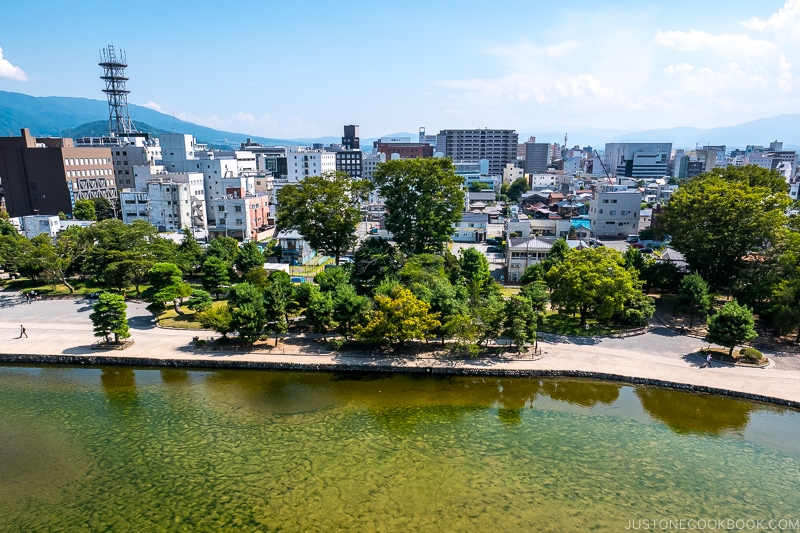
Tsukimi-Yagura 松本城 月見櫓
Two of the castle building were added later during the peaceful times. Tsukimi-Yagara had a platform with windows facing three sides to view the moon.
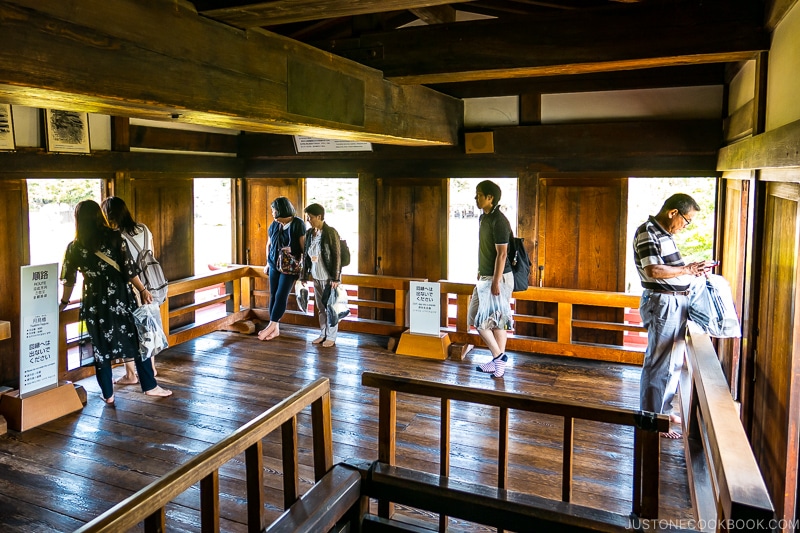
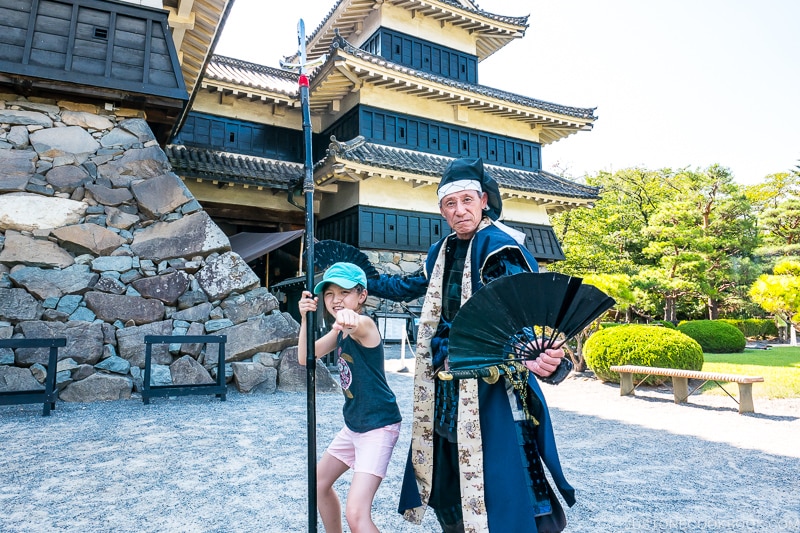
Nawate-Dori 縄手通り商店街
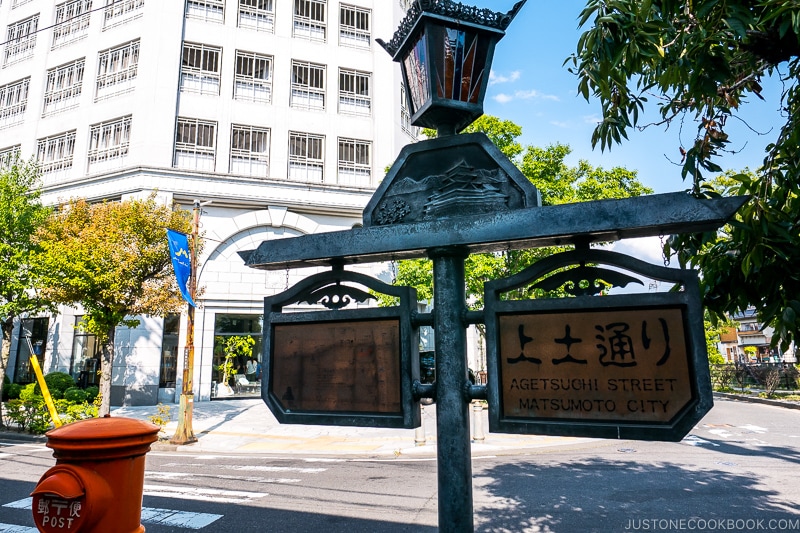
After touring Matsumoto Castle, head a few blocks south to Nawate-Dori. This pedestrian shopping street has restaurants, small boutique shops, and snack shops.
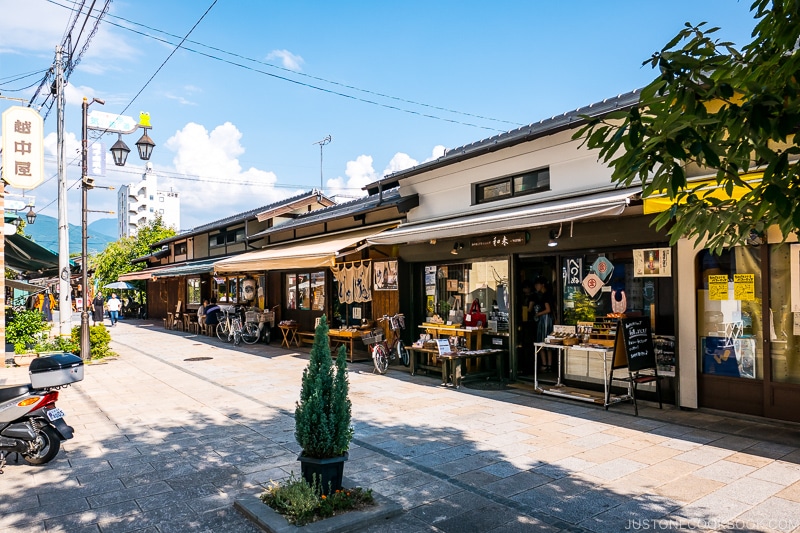
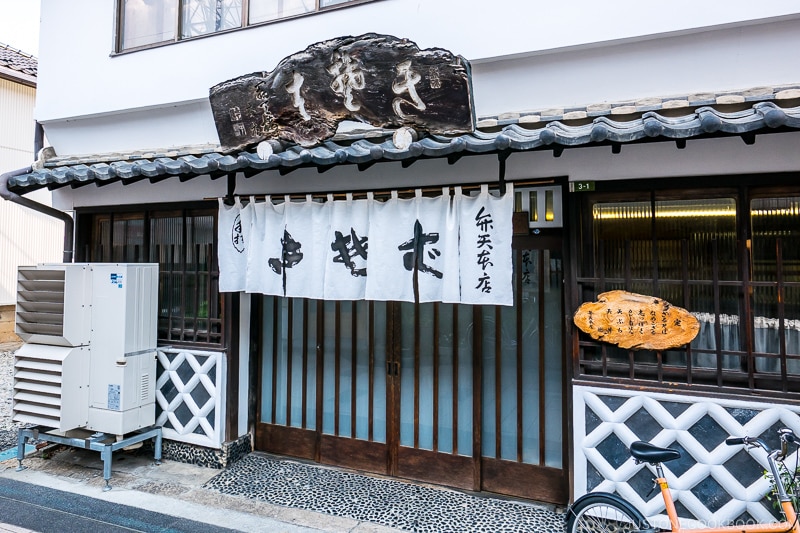
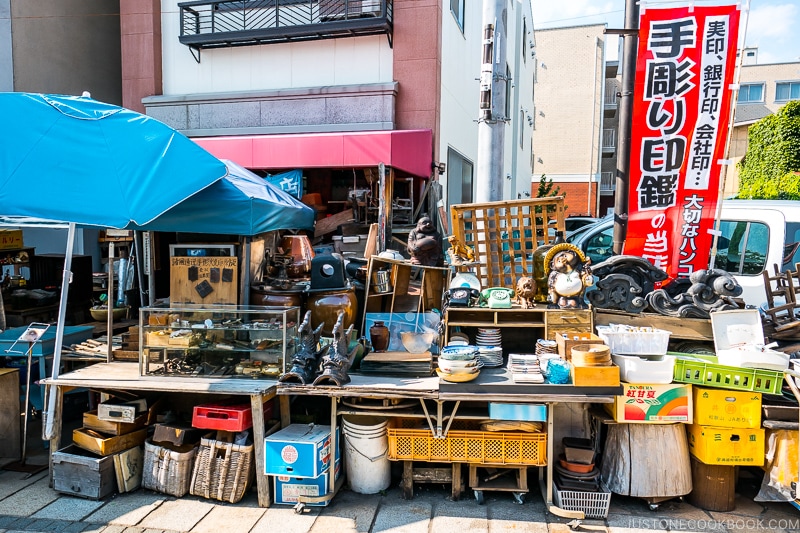
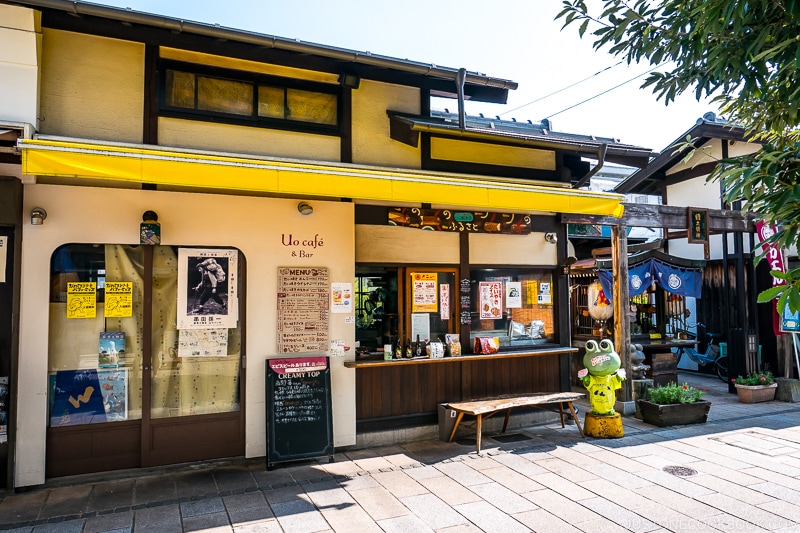
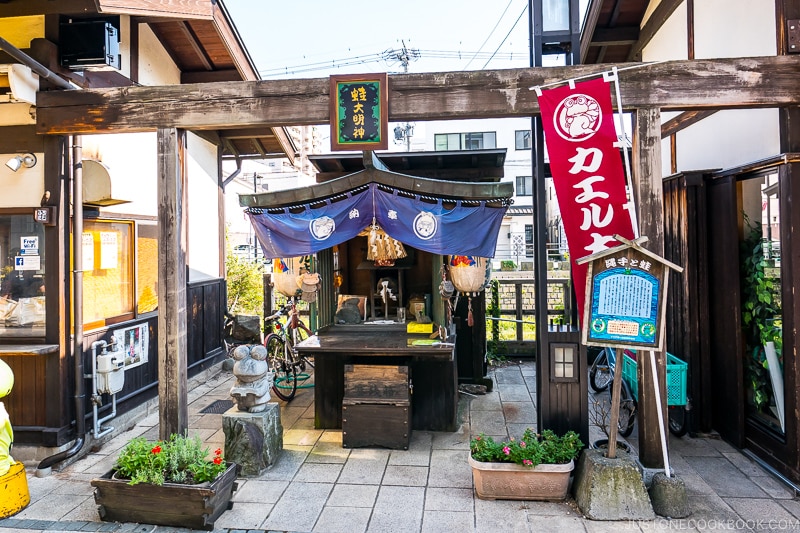
It’s a rare opportunity to visit an original Japanese castle. The only other one we’ve been to is Himeji Castle and that was a great experience. It is our goal to visit all twelve original castles.
If you enjoy our travel adventures in Japan, head on over to our Japan travel page for more stories.



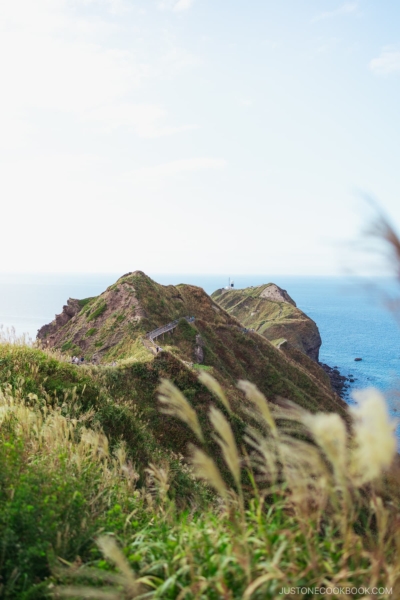
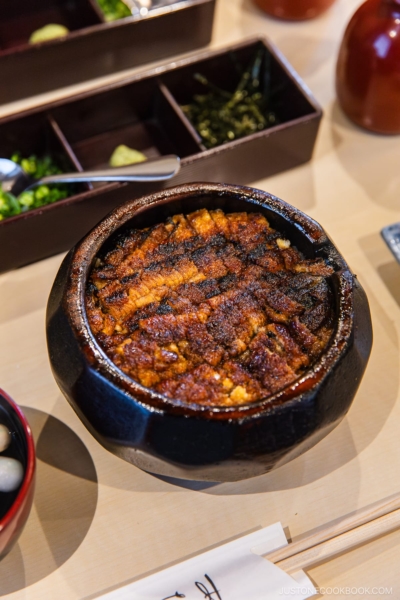




Thanks so much for this guide. I was recently on a trip to Japan and found your guides super helpful!
How To Unclog Stiiizy Vape Pods
Thank you for your post, like another commenter, I felt like I was in the castle. Thank you for your pictures and comments.
so beautiful! I hope one day it is able to travel again safely.
Hi Kazu,
We look forward to traveling soon again, hopefully in the near future!
enjoy reading this article; it brings back memory. thank you!
i went there 3 years ago and had fun exploring the castle. it is so grand and was fascinated by its tactical build. what also helps is the explanatory notes; it helps us visitors to understand and visualise the activities revolving around the castle.
oh! i can’t help thinking that the star wars darth vader’s costume is inspired by the samurai armour XD
gosh, I miss Japan so much…
Hi Denise,
We agree the castle did a really good job explaining to non-Japanese visitors the history and all the interesting story behind the castle as well as its features! We miss Japan dearly as well!
I enjoyed your photos of Matsumoto Castle. It brought back wonderful memories of visiting there with my son in 2010. It was one of the most breath taking events of that trip. I will always remember climbing those steep steps and marveling at the men and women much older than I that slowly crept their way to the top.
My son still lives in Japan and I can recommend his town as a great place to visit with kids. The Fossa Magna Museum and the Itoigawa UNESCO Global Geopark are great way to learn about the birth of the Japanese Islands and enjoy the beauty of the 24 Geosites.
Again, thank you for sharing your travels. Seeing your stories always makes me smile and urges me to return (once we can travel again)
Hi Cynthia,
So happy to hear you were able to visit in 2010! Looking at our own pictures from the visit brought back many memroeis as well. What an amazing building and structure considering it’s 500 years old.
Hope your son is well in JApan and thank you so much for the recommendations!
Thoroughly enjoyed your post on Matsumoto Castle! I felt like I was there- what a treat during this pandemic. Thank you!!
Hi Eric,
Thank you so much for reading the Matsumoto Castle post. We highly recommend visiting if you re planning to go to Japan in the future.
Ah! You brought us back to our visit in 2019! We visited Matsumoto castle and had a great soba dinner. Sweet memories. We’re looking forward to be able to visit Japan again.
Hi Karen,
We were there in 2019 too and took the visit for granted! Now we’ll appreciate our castle visits that much more. So good to hear you had a great memory there!
OMG! Just gorgeous views. So interesting to see history. Everything is nicely conserved and we can appreciate hard work and beauty.
Hi Lily,
Thank you so much for stopping by! Matsumoto Castle is extremely well preserved and it was quite an experience for our family to visit!